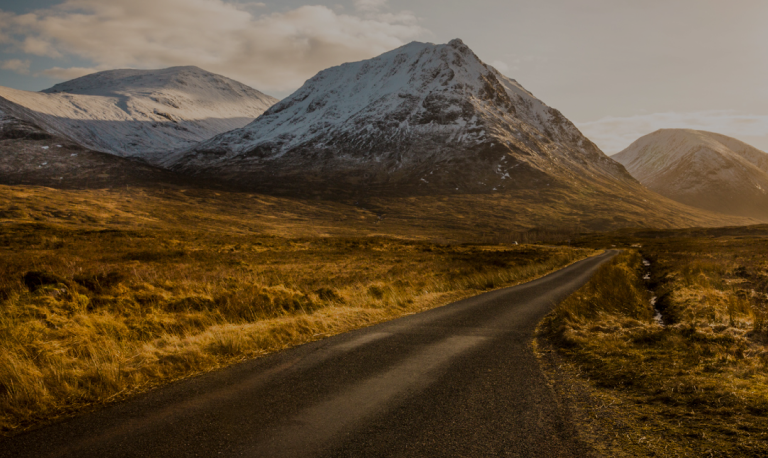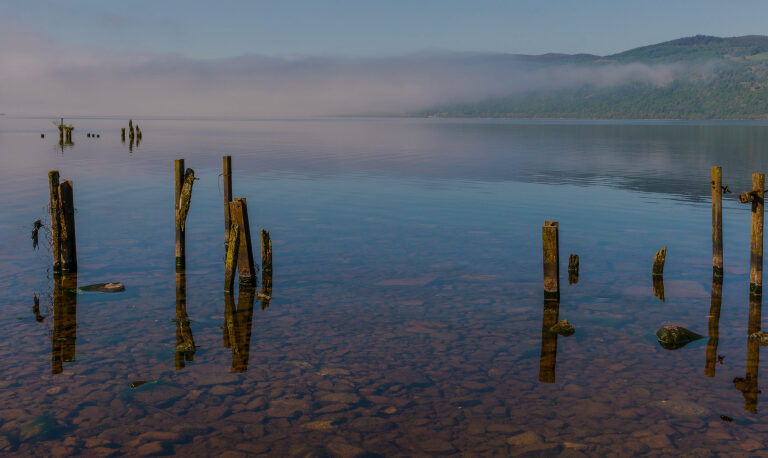7 Natural Wonders in Scotland Which Will Take Your Breath Away
Scotland’s landscapes are famed for their splendour and diversity. This is a country where tall mountain ranges tower over deep glens, white sandy beaches encase rugged islands, and sparkling rivers gently meander through rolling fields.
Scotland’s landscapes are famed for their splendour and diversity. This is a country where tall mountain ranges tower over deep glens, white sandy beaches encase rugged islands, and sparkling rivers gently meander through rolling fields.
It’s no wonder, then, that Scotland is one of the best places in the world to find natural beauty. Read on for our list of Scotland’s seven most stunning natural wonders – all of which you can discover on our award-winning self-drive holidays …
An Lochan Uaine, Cairngorms National Park
An Lochan Uaine, which translates from Gaelic to ‘The Green Lake’, is aptly named after its striking emerald hue. Sitting deep in the Cairngorms National Park, legend has it that the secluded spot near Glenmore earns its unique colour from fairies who wash their clothes in the crystal waters, although science suspects it is instead down to mineral composition. Either way, there is an air of mystery about the lochan.
Whilst it’s rarely a busy spot, the summer months see an increase in visitors as wild swimmers bask in the refreshing waters. A winter wonderland greets out-of-season visitors, as the lochan glitters green in the low winter sun.
The lochan is one of Scotland’s most stunning natural wonders in itself, but it is worth mentioning that its surrounding area is also home to another natural wonder – the sparse remnants of Scotland’s Caledonian Forest. This ancient woodland was once a vast Scots pine forest that covered most of the country and dates back to around 7,000 BC. The forest’s area is now hugely reduced, due to changes in Scotland’s climate and the grazing effects of livestock and deer, but the area around An Lochan Uaine is one of the best-preserved.
View this post on Instagram
Sandwood Bay, Sutherland
Accessible only by a four-mile long footpath from the nearest village, Sandwood Bay is the most remote beach in Britain. At first glance, this deserted bay seems serene – its pink sands are laced with elegant shells and smooth pebbles and are flanked by high sea cliffs, creating an impression of shelter and safety. Grasses wave softly in the wind atop towering dunes.
But Sandwood Bay hides a few dark secrets. The beach’s exposed location on Scotland’s north-western tip – just off the North Coast 500 – and the lack of lighthouse there until 1828, meant it saw many a shipwreck wash up on its shores. Several of these wrecks are preserved under the sand, the pointed masts and sweeping hulls of which can be exposed by the bad weather that so often frequents these shores.
The beach is also said to be home to a band of ghostly sailors, shipwrecked there before the completion of the lighthouse. Many an overnight resident of Sandwood Bay’s long-standing bothy has reported waking up to a bearded being peering through the misted glass in the depths of the night.
View this post on Instagram
Corryvreckan Whirlpool, Sound of Jura
One of Scotland’s most unusual natural wonders is the formidable Corryvreckan Whirlpool, which is commonly regarded as the world’s third-largest. Strong currents in the Atlantic Ocean and atypical underwater topography combine to create an intense tidal race in the Sound of Jura – a real spectacle for thalassophiles!
The whirlpool can be viewed from the vastly uninhabited and rugged north coast of Jura or, for the more hardened explorer, by boat trip or scenic flight from Oban. You can discover Scotland’s magical west coast on our Seafood Trail self-drive tour.
View this post on Instagram
Fingal’s Cave, Isle of Staffa
Fingal’s Cave, on the uninhabited Isle of Staffa, is a true natural phenomenon. This majestic sea cave is composed of hexagonally jointed basalt columns, formed from the same series of lava flows that created the world-renowned Giant’s Causeway in Northern Ireland. The island, and Fingal’s Cave itself, was made famous by botanist Joseph Banks, who highlighted its wild beauty in his writings.
Fingal’s Cave is famed for its natural acoustics, which are known to have inspired Felix Mendelssohn’s ‘Hebrides Overture’, so it is definitely worth a visit for more than just the stunning scenery.
View this post on Instagram
Fortingall Yew Tree, Perthshire
The Fortingall Yew is perhaps one of Scotland’s more peculiar natural wonders. It is not a dramatic landscape or geological marvel like others in this list, but rather an ancient botanical miracle. The tree is reputed to be one of the oldest living things in Europe, and is between 3,000 and 9,000 years old.
The Yew is located in the churchyard of the village of Fortingall in Highland Perthshire. It is a relic of early Christianity in Scotland, as yews were commonly planted in churchyards around this time as a symbol of the Resurrection. This is down to the distinct red-and-white mottling of the species’ wood, said to resemble the pouring of Christ’s blood during his crucifixion.
The tree is sacred to Christian worshippers, and many still visit the site to pay homage to this great wonder of Scotland’s history.
View this post on Instagram
Buachaille Etive Mor, Glencoe
Often more simply referred to as ‘The Buachaille’, this rugged peak is one of Scotland’s most famous natural wonders. The mountain’s position at the head of Glen Etive, and its distinctive pyramidal form, has ensured it has become one of Scotland’s most photographed sights. ‘The Buachaille’ is also one of Scotland’s most popular Munros.
However, Buachaille Etive Mor is more than just a wonder for photographers and climbers. It is composed of some of the oldest sedimentary and volcanic rock strata in the world and has been modelled into its current shape by the effects of glaciation and local climate over the past 380 million years. This makes it a popular point of interest for geologists too!
View this post on Instagram
Bow Fiddle Rock, Moray
Bow Fiddle Rock is a natural sea arch located on the Moray Coast, aptly named after its unique resemblance to a fiddle bow. Rising sharply out of the sea between Portknockie and Cullen, this stunning sight is more than just visually interesting. The arch is a geological wonder, formed by the collision of two continents millions of years ago.
The arch also provides unrivalled photography opportunities. Particularly beautiful at sunrise or sunset, it is a landscape photographer’s ideal destination. If you visit during May and August, you might even be lucky enough to witness the sun rising through the arch! You can explore Bow Fiddle Rock and the delightful Moray coast on our North East 250 road trip.
View this post on Instagram
Experience Scotland’s Natural Beauty With Absolute Escapes
Ready to discover Scotland’s amazing natural wonders? Established in Scotland in 2004, Absolute Escapes are award-winning specialists in self-drive holidays and walking holidays.
Why not send us an enquiry and take the first step in planning your Scottish escape!
Emily Farquhar


